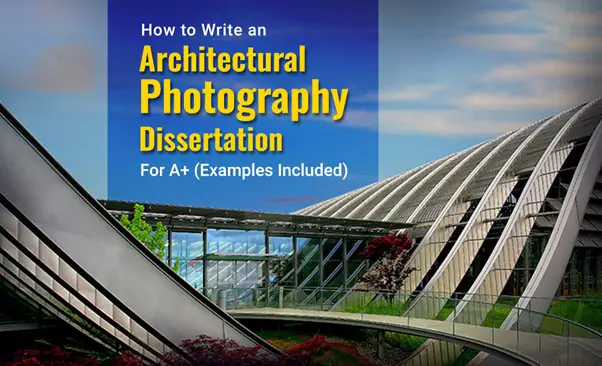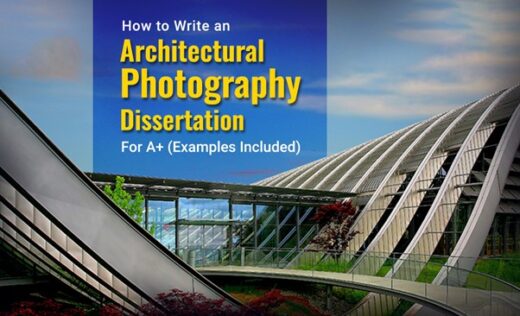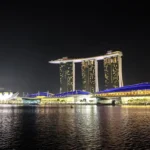How to write an architectural photography dissertation guide, essay help online, expert writing companies
How to Write an Architectural Photography Dissertation for A+ – (Examples Included)
1 April 2024
Students who are mostly passionate about architecture and photography choose this combined field for their higher studies. While doing so, they have to go through the intricate world of architectural photography dissertation writing, where they delve into the magnificent canvas of their cameras. Architectural photography is an art form, and delving into the intricacies of these structures to write a thesis about it is a really enlightening experience.
The latest research indicates that by 2025, the demand for architectural visualisation is projected to reach $5.72 billion, marking a staggering increase of nearly 500% from 2016. This remarkable growth shows the growing significance of architectural visualisation in today’s world.
Thus, students who want to explore the relationship between architecture and visual storytelling choose this emerging field. For a better career, they have to go through architectural photography dissertation writing to earn a degree in their favourite subject. However, the difficulty comes when they get no guidance from their college or university, and students may end up with lower grades.
No more worries will leave behind with the help of our comprehensive guide to writing an excellent dissertation on architectural photography. Here, we’ll walk you through every step of the procedure, from choosing an interesting topic to writing an engaging conclusion.
What is Architecture Photography?
Nashville Film Institute stated that architecture photography is all about taking pictures of buildings and structures, inside and out. It’s less fast-paced than other types of photography because it requires careful consideration of the scene or setting. That means you don’t necessarily need a super-fast camera, but you do need to focus on capturing high-quality images. You’ll also need to be skilled in using editing tools, framing buildings in your shots, and following composition rules.
These photos are often used for commercial purposes, like showcasing developments, online brochures, or project portfolios. Architectural photographers can come from a photography background, specialising in architecture, or they may have trained as architects or in related fields.
How Do You Write an Architectural Photography Dissertation? A Step-by-Step Guide
Are you wondering how to start a journey of dissertation writing when you have a lot to discuss but don’t know how to do it well? We understand your situation well, as we all have gone through similar phases. Whenever you think about starting such a long project, you need some guidance about how to do it well. Unfortunately, universities and supervisors mostly do not cooperate with students and offer no support that is needed.
In this critical situation, the best way is to seek dissertation help online from expert writing companies. They not only assist students in writing their dissertations but also make their work stand out from others with their expertise and knowledge.
In addition, if you are starting your dissertation for architectural photography, the following step-by-step guide would be a great reward for you!
Step 1: Selecting a Topic That Matches Your Passion
Any effective architectural photography dissertation starts with a solid, well-defined topic. Your topic should demonstrate your enthusiasm for architecture photography. Students often struggle with topic selection, so here are the criteria that they should follow:
- Discover what interests you the most.
- Stay up to date with what’s trending in architecture.
- Talk to your supervisors and other helping sources for guidance.
- Think about what resources you have and what you can do with them.
- Get creative and brainstorm new ideas.
By following these points, you will be able to select the best topic for your dissertation. Furthermore, to assist you in this regard, we are presenting a few architectural photography dissertation topic ideas that you can use in 2024:
- Comparison of historical vs. contemporary buildings
- Exploring the majesty of historical architecture
- Designing particular architectural styles
- Examining the form and function interaction in architecture
- Influence of architecture on how people behave or interact with one another
- Exploring the defining features in greater detail, as well as how photographers manage to capture its essence.
- Technique and technology used in the advancement of photographic technology
- Examine the various methods employed historically and how they affected the final product.
Step 2: Building Your Knowledge with Research and Exploration
After selecting your topic, get started on a comprehensive research project. A thorough research on the subject establishes your base for architectural photography dissertation writing. To do research, you need to find credible sources of information and employ them in your work. By exploration, you will get to know the literature study of your subject which will help you find out the research gaps that your study may fill.
In today’s world, there are a lot of sources that you can use for your research, such as:
- Prominent Architectural Photographers: Look at the creations of some highlighting photographers in this field, such as Iwan Baan, Julius Shulman, and Andrew Prokos, among others. Examine their methods, lighting preferences, and compositional decisions.
- Books and Journals for Academics: Examine the literature currently available on architectural photography. Seek reputable books and peer-reviewed periodicals that examine your topic of choice or adjacent fields.
- Internet Resources: Make use of online directories, blogs devoted to photography, and online displays featuring architectural photography.
- Interviews and Case Studies: To gain insight into the creative process of an architectural photography dissertation, think about doing case studies on certain architectural projects that have not much studied before.
Step 3: Formulating Your Research Question to Ask an Inquiry
Having a strong foundation of information, the next step is to develop the main question that will guide you with your further dissertation. This question must be clear, pertinent to your selected subject, and capable of generating insightful analysis and novel research.
Strong architectural photography dissertation research questions include the following examples:
- How does the use of interior and exterior photography techniques differ in architectural photography?
- What is the impact of shutter speed on capturing architectural details in different weather conditions?
- How does the relationship between architecture and artificial light influence the aesthetic of architectural photography?
- What are the advantages and limitations of black-and-white photography in capturing architectural elements?
- How does perspective control enhance the portrayal of architectural structures in wide-angle lens photography?
- How do straight lines contribute to the composition and visual appeal of architectural photographs?
- What role does interior lighting play in highlighting design elements in architectural photography?
- How has architectural photography evolved as an art form since the 19th century?
Step 4: Choosing a Research Methodology
After getting enough knowledge on your subject, now it’s time to choose a method of work that you want to do in your architectural photography dissertation. We hope that you already have picked up the best research questions according to your needs. Now, you need to find the answers to these questions by choosing the right method.
The following are some important points that you should consider here:
- Data Collection: First of all, you have to find the relevant data and select for your own work. You can do this by reviewing the literature, doing surveys and interviews, or taking live photographs of some artistic piece.
- Data Analysis: After getting enough data, it’s time to analyse it just like evaluating the good and bad things in it. Here, you should select the data that is relevant to your study by using software programs, qualitative coding, or visual analysis.
- Theoretical Framework: Explore the literature and see if your study matches with any existing theories related to architectural photography. It will add more value to your dissertation work.
Step 5: Planning Your Architectural Photography Dissertation Structure
Any dissertation without following the right framework is nothing but a waste of time. So, if you want your work to have some worth, then you must make your story engaging enough to show the ideas from your study.
To write a perfect dissertation on architectural photography, there is a proposed chapter outline that you must follow. The following is the list of chapters that you should discuss here:
Chapter 1: Introduction
It is the first chapter that comes right after the abstract. Here, you should introduce your topic in the most captivating way, along with some relevant images. It outlines the purpose of your study, your topic, your thesis statement and your research questions.
Chapter 2: Literature Review
Give a thorough synopsis of the literature on architectural photography that is pertinent to your subject here. It shows your research work in detail and lets your readers know the background knowledge of the subject and your architectural photography dissertation topic.
Chapter 3: Methodology
Clearly describe your data-gathering strategies, research methodologies, and the reasoning behind your approach of choice.
Chapter 4: Research and Analysis
The core of your dissertation is this part. Here, you should summarise the results of your investigation, along with any relevant images, and evaluate them using your theoretical framework. Talk about the insights your research provides on architectural photography and discuss its effects in detail.
Chapter 5: Interpretation and Discussion
Discuss the findings and consider further ramifications in this part of your architectural photography dissertation. Talk about the ways in which your study advances the understanding of architectural photography.
Chapter 6: Conclusion
Here, you should summarise your primary conclusions, restate your main ideas, and offer possible directions for future research. It is basically the end of your dissertation.
Bibliography
Provide a thorough list of all the references used in your architectural photography dissertation after completing all the chapters. It not only adds value to your work but also enhances its credibility and saves you from unwanted plagiarism.
Step 6: Polishing Your Writing by Scholarly Writing Techniques
After the topic is established, it’s time to polish your writing by thorough editing and proofreading to ensure coherence and clarity. In this step, you should find any mistakes like grammatical, spelling, or typos and remove them. You should also make an effort to make your work jargon-free to ensure that your reader clearly understands your point of view. You should aim to write in a way that will both inform and interest your reader.
You should check whether all the sources you have used are properly placed or not. You should also learn how to properly write your reference list and in-text citations by following the guidelines provided by your institute (APA, MLA, etc.). You should carefully check formatting inconsistencies and grammatical problems. Moreover, you can also seek assistance from a reliable friend or co-worker to proofread your work.
Step 7: Using Your Photos to Tell a Visual Story
During this architectural photography dissertation writing, you often take photographs of buildings to get their natural visuals. Don’t merely write about photos; include them in your dissertation too to strengthen and bolster your claims. What you should do here includes:
- Always use high-quality cameras to ensure better photography. Make use of eye-catching, high-resolution images that are pertinent to your research topic.
- You should also add captions that give each image context and show how it connects to your points of discussion in your dissertation.
- You should prefer to analyse the image in more detail than just describing it. Also, see how each of these aspects affects the overall idea you’re trying to get over.
In this way, by following all the essential steps mentioned above, you will be on your journey of successful dissertation writing. However, if at any point, you get stuck while working on your architectural photography dissertation, you can acquire help from professional dissertation helpers. They are always ready to assist students with their best on-time services. In this way, you will be sure that your dissertation will win the competition and you will earn A+ grades.
How do I Become an Architectural Photographer?
So, you can also become a professional architectural photographer by mastering the skills of photography like composition, lighting, and camera settings. Here, you should learn about different types of cameras and lenses and how they work best for capturing buildings.
In this way, you will be able to get the perfect photography that fits your needs. The purpose of an architectural photographer is to take pictures of buildings and structures for various purposes like publishing, marketing, or art.
What are the Key Elements in Architecture Photography?
Architectural photography isn’t just about taking captivating photos of buildings; it’s an artistic skill that students need to work on their architectural photography dissertation. It blends architectural knowledge with visual composition and focuses on these five key elements:
- Light
- Composition
- Equipment
- Patience
- Perspective
Architectural Photography Dissertation Examples
Students mostly have no idea about how these dissertations are written and what you actually need to work on them. In this situation, getting assistance from UK-based dissertation writing services can be a better decision. These writing companies offer great support to the student and allow them enough room to work on their other projects and responsibilities too.
In addition, you can also get various dissertation examples from the Internet. For example, Slideshare presented the following example on the relevance of photography in architecture.
How to Write an Architectural Photography Dissertation Conclusion
We all know that your architectural photography dissertation is a chance to demonstrate your research skills, analytical abilities, and enthusiasm for this field. However, to embark on this journey, you need to follow some guidelines and rules that are crucial for your success. By adhering to the above-mentioned comprehensive guide, you can start the fulfilling process of writing a dissertation today that will surely earn you A+ grades as well.
So, do not let your passion stay behind, and start your architectural photography with our expert guide to ensure you get the highest grades possible.
Comments on this guide to How to Write an Architectural Photography Dissertation for A+ – (Examples Included) article are welcome.
Architecture
Bespoke metal profiles for innovative building designs
How to properly insulate your garage at home
Comments / photos for the How to write an architectural photography dissertation for A+ advice guide page welcome.





